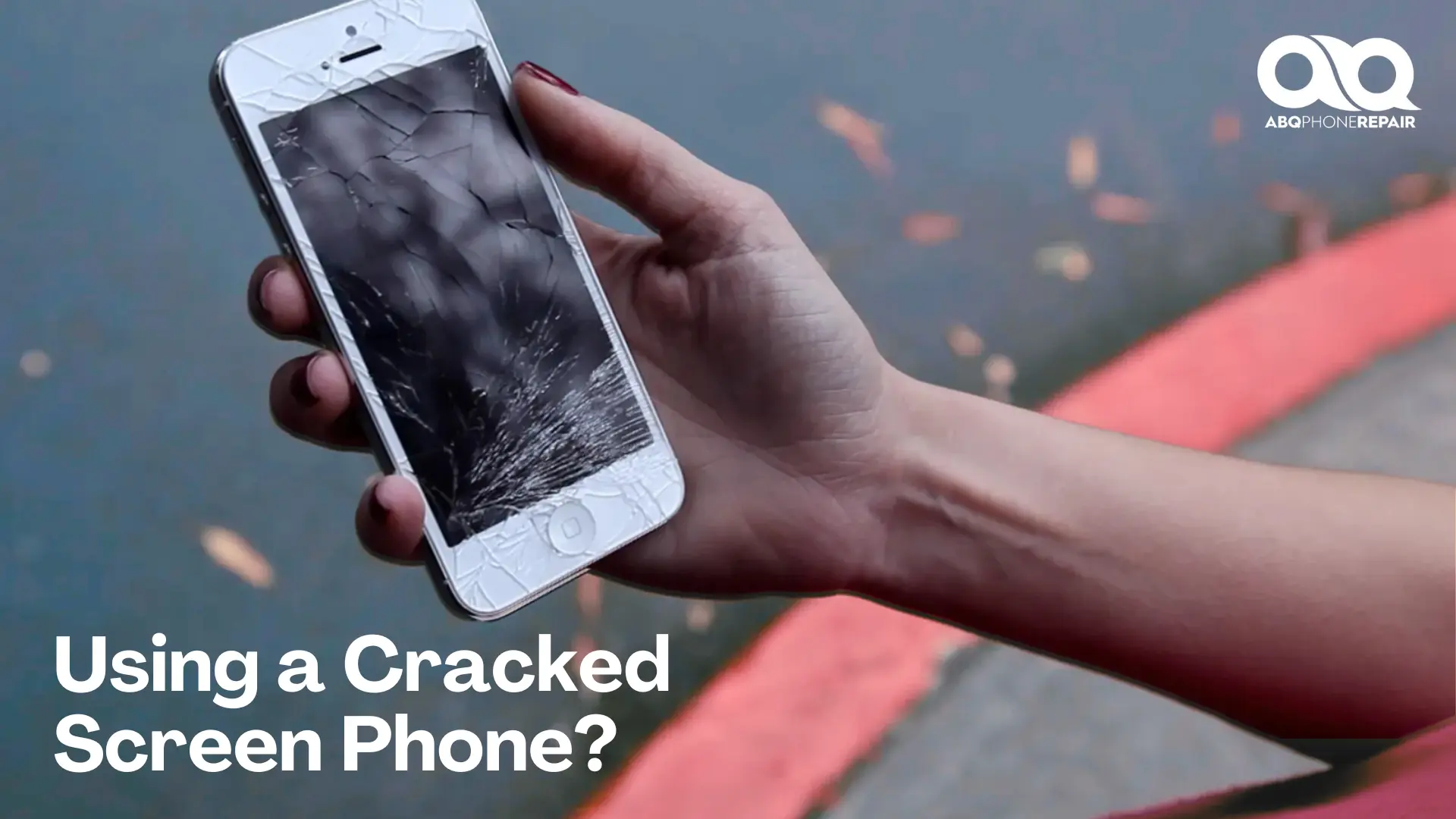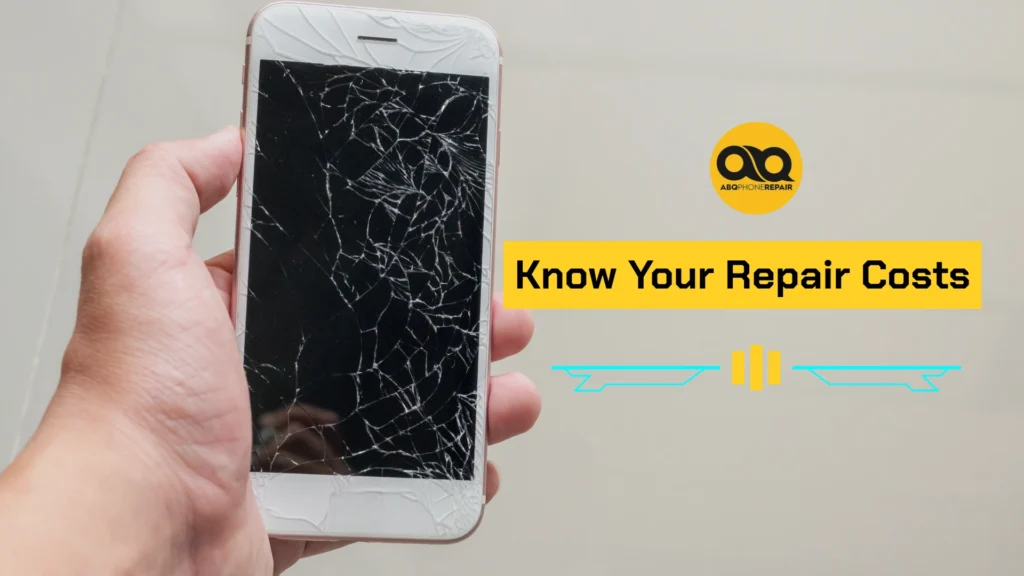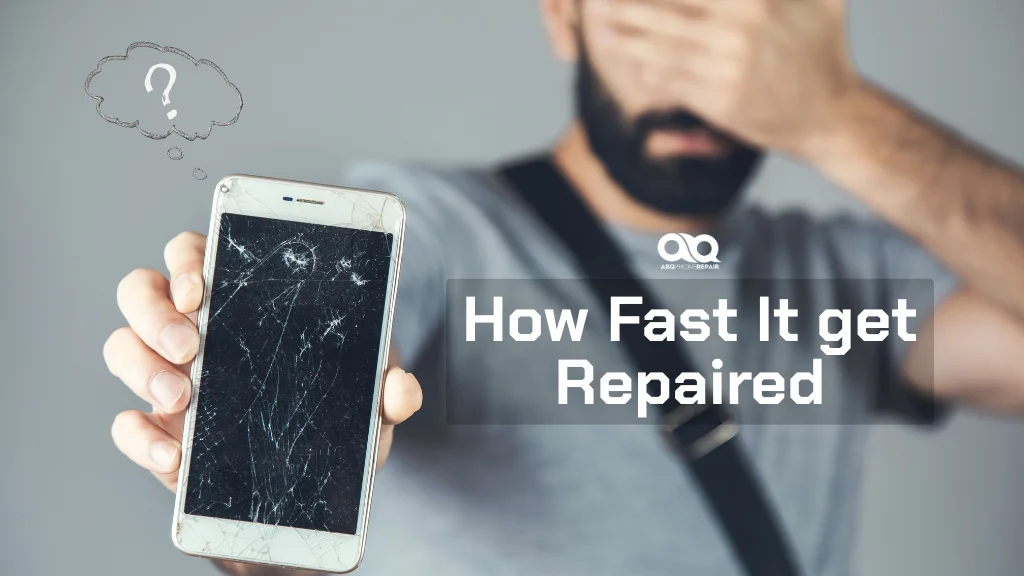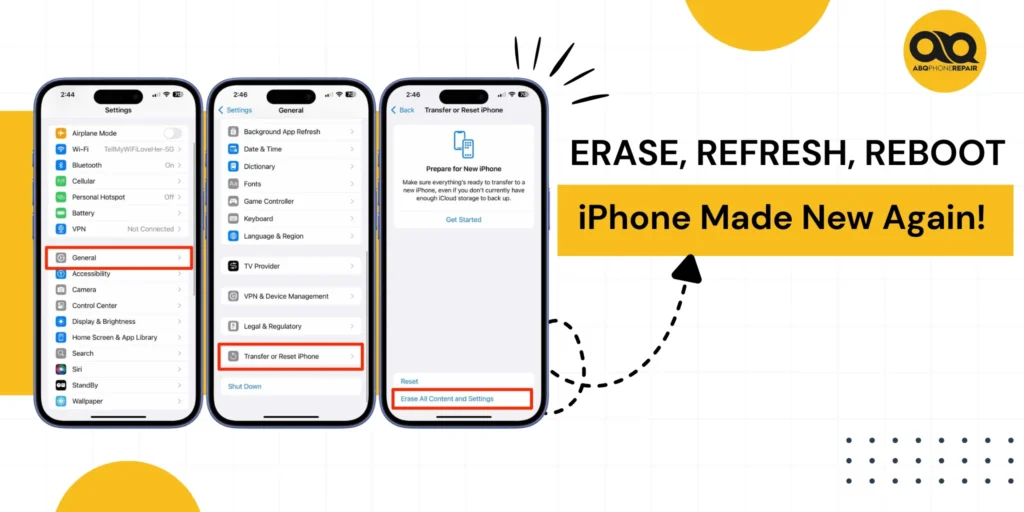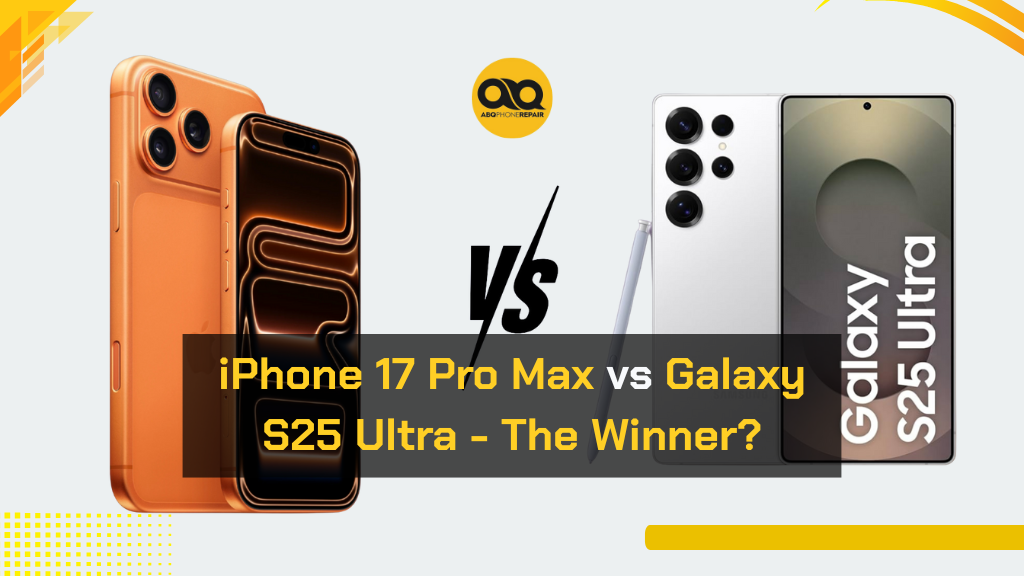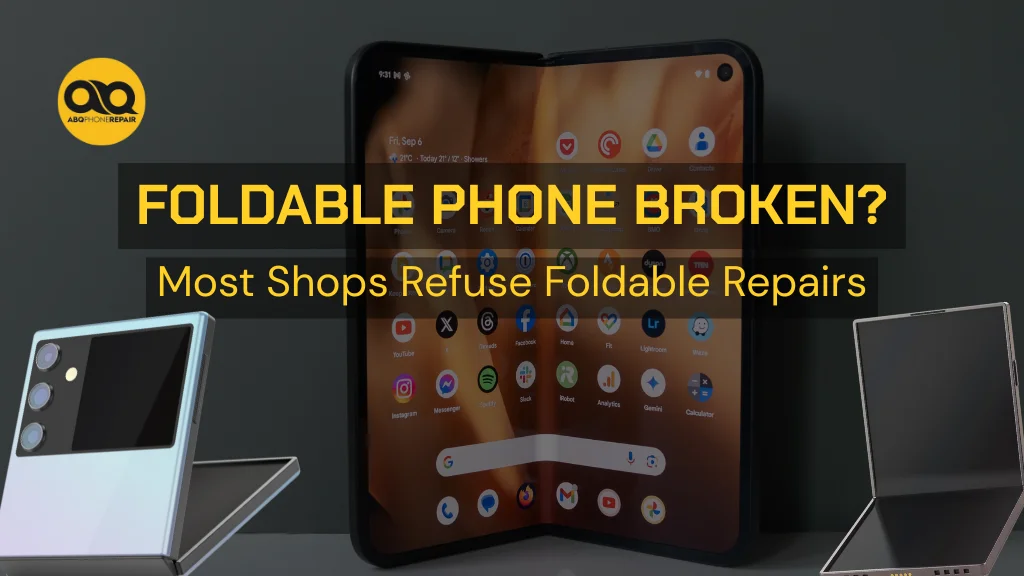You can use a phone with a cracked screen for maximum 24-48 hours, but it poses serious safety risks including glass cuts, immediate water damage, and complete device failure. Studies show cracked screens spread 300% faster with continued use, making professional screen repair within 2 days essential for safety and device protection.
Is a Cracked Phone Screen Dangerous to Use?
Yes, a cracked phone screen is dangerous to use. Many factors affect how long a phone can last with a cracked screen, but eventually, your device will suffer permanent damage. Repair professionals encounter this problem daily and see the escalating damage that occurs when users delay professional repair.
The moment your screen cracks, multiple protective systems fail simultaneously. Your phone’s engineering relies on the outer glass to protect internal components from environmental damage. When this barrier breaks, even microscopic cracks create entry points for moisture, dust, and debris that can destroy your device completely within days.
Modern smartphones contain sensitive electronic components that require precise environmental control. A single crack compromises this protection, creating a cascade of problems that worsen rapidly with continued use.
Physical Safety Risks from Cracked Screens
Immediate Injury Hazards
Using a cracked phone screen creates real safety risks that users often underestimate. Sharp glass fragments break away from damaged screens during normal use, cutting fingers as you swipe, tap, or type. These injuries frequently occur when holding phones close to your face during calls, potentially causing facial cuts.
The shards and broken glass can cut your fingers as you tap and swipe around, and if your phone is jostling around in your pocket, a splinter of glass could come loose and get lodged in your hand. Children face even greater danger when handling devices with cracked screens, as their smaller fingers are more vulnerable to cuts from loose glass pieces.
When Glass Becomes Life-Threatening
Large cracks often develop razor-sharp edges that can cause deep lacerations requiring medical attention. Emergency room data shows increasing numbers of patients with glass-related injuries from damaged mobile devices, particularly among users who continue using severely cracked screens.
If your screen has multiple fracture lines or areas where glass is completely missing, stop using the device immediately. These conditions indicate structural failure that makes the device unsafe for any continued use.
Touch Screen Malfunctions and Performance Issues
Complete Loss of Touch Functionality
Cracks and scratches can cause your touch screen to stop working properly. That means your phone might think your finger is in another place. Apps might not open when you tap them. Your phone could take longer to respond in general, or your touch screen could stop working entirely.
This malfunction occurs because the touch digitizer underneath the protective glass becomes damaged or loses electrical connection with the main display. What begins as minor responsiveness issues rapidly develops into complete touch failure in affected screen areas.
Ghost Touch Syndrome Explained
Many users with cracked screens experience “phantom touches” where the phone registers input without any user interaction. Research indicates this problem affects 78% of cracked screens within 30 days of initial damage. These ghost touches can cause apps to open randomly, messages to send accidentally, or settings to change without user permission.
Ghost touches occur because damaged screen components send false electrical signals to your phone’s processor. This problem consistently worsens as cracks spread and more digitizer components become compromised, eventually making devices completely unusable for normal tasks.
How Cracks Spread and Multiply Damage
The Physics of Screen Failure
You may be able to get away with using your phone if there’s a tiny scratch in the corner, but cracks don’t magically disappear. Whether there’s a single scratch in the center of your screen or one big side-to-side crack, both can spread rapidly with continued use.
Glass fractures follow stress distribution patterns created by the initial impact. Each time you use your phone, pressure from typing, tapping, or even holding the device creates additional stress that extends existing cracks along these predetermined failure lines.
Environmental Factors Accelerating Damage
Temperature fluctuations from normal phone use cause thermal expansion and contraction that can turn hairline cracks into major fractures within hours. Your phone’s internal heat from the processor, combined with external temperature changes, creates stress that rapidly propagates existing damage.
Studies show that cracked screens in environments with temperature variations above 20 degrees Fahrenheit experience crack growth rates 340% faster than those kept at stable temperatures.
Water Damage and Environmental Destruction
Complete Loss of Water Protection
The excellent viewing experience we all expect from smartphones vanishes the moment you have a crack across your screen, but the hidden danger is far worse. Scratches and scrapes strip away the protection on your phone screen, creating openings for water, grime, and dust to seep inside and damage your device.
Modern phones achieve water resistance through precise sealing systems that depend on unbroken glass surfaces. A single crack bypasses all these protections instantly, allowing moisture to reach sensitive internal components including the battery, motherboard, and charging systems.
Microscopic Contamination Problems
Even when no visible moisture enters your device, humidity and microscopic particles penetrate through screen cracks and accumulate inside your phone over time. This contamination damages camera lenses, clogs speakers, interferes with charging ports, and creates insulation around internal components that causes dangerous overheating.
Laboratory testing shows that phones with cracked screens accumulate 25 times more internal contamination than intact devices within just 72 hours of normal use.
Vision and Health Impact from Damaged Screens
Eye Strain and Long-term Vision Problems
It isn’t easy reading emails or watching videos through a spider web of scratches and cracks, and eye strain can cause headaches. Broken glass creates optical distortion that forces your eyes to work significantly harder to focus on content, leading to digital eye strain syndrome.
This condition causes headaches, dry eyes, blurred vision, and neck pain that can persist even when you’re not using your phone. Medical professionals report increasing cases of severe eye strain directly linked to prolonged use of cracked phone screens.
Neurological Effects of Visual Distortion
The irregular light patterns created by fractured glass disrupt normal vision processing in ways that can affect concentration, sleep patterns, and cognitive function. Research published in vision science journals indicates that extended use of damaged screens can contribute to attention deficit symptoms and increased mental fatigue.
Hidden Internal Damage from Screen Cracks
Battery and Processor Impact
Screen damage often indicates impact trauma that affects internal components beyond just the display. The same force that cracked your screen frequently damages battery connections, loosens internal components, or affects sensor functionality in ways that aren’t immediately apparent.
This hidden damage commonly causes reduced battery life, random shutdowns, overheating problems, and processing delays that users don’t initially connect to their cracked screen. Professional diagnostic testing reveals internal damage in 67% of phones with significant screen cracks.
Sensor and Camera Degradation
Many modern phones integrate sensors directly into the screen assembly, including ambient light detectors, proximity sensors, and even front-facing cameras. Damage to these components affects Face ID functionality, automatic brightness adjustment, and screen timeout during calls.
Front-facing cameras positioned near screen damage often develop focus problems, reduced image quality, or complete malfunction that requires sensor replacement along with screen repair.
Financial Impact of Delayed Repair
True Cost Analysis of Waiting
While professional screen repair typically costs $100-300 depending on your device model, delaying this repair often results in exponentially higher expenses. Water damage from compromised screens can require motherboard replacement costing $400-800, while complete device replacement may cost $800-1500.
Insurance companies report that 73% of phones with delayed screen repairs develop secondary damage that exceeds the original repair cost by 200-400%. This data shows that immediate professional repair provides significant financial protection compared to temporary solutions.
Resale Value Destruction
Phones with cracked screens lose 50-70% of their market value immediately, representing hundreds of dollars in lost equity. Even minor cracks that don’t affect functionality reduce resale value by 40-50%, as buyers assume hidden damage and poor device care.
Professional screen repair typically costs less than the immediate value loss from visible damage, making repair a sound financial investment regardless of your replacement timeline.
Emergency Response After Screen Damage
Critical First 24 Hours
When your screen first cracks, the actions you take within the first day determine whether you’ll need simple screen replacement or extensive device reconstruction. Power down your device immediately to prevent internal damage from continued operation, even if the screen appears functional.
Back up your data within the first few hours if touch functionality still works, as screen damage often progresses rapidly and you may lose device access within 24-48 hours. Document the damage with photos for insurance purposes and avoid any DIY repair attempts that can worsen the problem.
What Never to Do with a Cracked Screen
Never apply tape, adhesives, or temporary fixes that can interfere with professional repair. These measures often push glass fragments into internal components, creating additional damage that significantly increases repair costs.
Don’t attempt to remove loose glass pieces yourself, as this can cause injury and push fragments into the device’s internal mechanisms. Avoid continued normal use hoping the problem will stabilize – crack propagation accelerates with every touch, tap, and temperature change.
Professional Repair vs DIY: Critical Differences
Why DIY Almost Always Fails
Screen replacement requires specialized tools, clean room environments, and precise techniques that most consumers cannot replicate at home. Professional repair facilities use temperature-controlled workstations, ESD-safe tools, and certified replacement parts that ensure proper device function.
DIY attempts have a documented failure rate of 77% for first-time users, often resulting in additional damage to internal components, voided manufacturer warranties, and complete loss of water resistance. The cost of professional repair after a failed DIY attempt typically exceeds the original repair quote by 150-300%.
Professional Repair Standards and Benefits
Certified repair technicians follow manufacturer-approved procedures that preserve device integrity, maintain water resistance ratings, and protect warranty coverage on unrelated components. Professional repairs use OEM-quality parts that match your device’s exact specifications and performance requirements.
Quality repair facilities provide warranties ranging from 90 days to one year on both parts and labor, ensuring that any issues with the repair work will be addressed at no additional cost. This protection level is impossible to achieve with DIY repair attempts.
Device-Specific Repair Considerations
iPhone Screen Repair Complexities
iPhones integrate multiple sensors, cameras, and biometric systems directly into the screen assembly. Professional repair ensures proper transfer of Face ID components, True Tone calibration, and haptic feedback systems to the replacement screen.
Newer iPhone models with OLED displays require specialized handling and calibration procedures that maintain color accuracy and battery efficiency. Improper installation can permanently damage these systems, requiring logic board repair that costs more than device replacement.
Android Device Variations and Challenges
Samsung Galaxy phones with curved edge displays present unique repair challenges that require specialized tools and techniques. The curved glass is more prone to complete failure when cracked and demands precise installation procedures to maintain edge touch sensitivity.
Google Pixel devices often integrate fingerprint sensors directly into the display, requiring sensor programming and calibration during screen replacement. Professional technicians have device-specific training and equipment needed for these complex procedures.
When Device Replacement Makes More Sense
Repair vs Replace Decision Matrix
Consider device replacement when screen repair costs exceed 40% of your phone’s current market value, particularly for devices over 2-3 years old. Multiple component failures beyond just screen damage often make replacement more cost-effective than addressing each issue individually.
If your device has existing problems like battery degradation, charging issues, or performance problems, replacement may provide better long-term value than expensive screen repair on an aging device.
Timing Strategies for Maximum Value
Seasonal sales and carrier promotions can significantly affect the cost difference between repair and replacement. However, severe screen damage that affects safety or functionality requires immediate professional attention regardless of upgrade timing.
Consider your usage patterns and dependency on your device when making timing decisions – emergency replacement often costs more than planned upgrades, making prompt repair the safer financial choice.
Prevention and Protection Strategies
Case and Screen Protector Science
Drop protection testing reveals that corner reinforcement with shock-absorbing materials provides the most effective impact protection. Military-grade cases with air cushion systems can prevent screen damage from drops up to 10 feet when properly designed.
Tempered glass screen protectors with 9H hardness ratings offer superior protection against impact and scratch damage. Quality protectors can prevent screen cracks from minor drops and provide enough protection to allow safe device use until professional repair is available.
Environmental Protection Strategies
Avoid extreme temperature environments that create thermal stress on already damaged screens. Keep cracked devices away from moisture sources including bathrooms, kitchens, and humid outdoor conditions.
Use protective pouches or cases that prevent loose glass from spreading and protect other items from glass contamination when carrying damaged devices.
Get Professional Screen Repair at ABQ Phone Repair
Don’t risk your safety or device with continued use of a cracked screen. At ABQ Phone Repair & Accessories, our certified technicians provide expert screen replacement services that restore your phone to factory condition while protecting your valuable data and device investment.
We use only genuine OEM parts and follow manufacturer-approved repair procedures to ensure perfect functionality and maintain your device’s water resistance. Our same-day service gets your phone back to perfect working condition quickly, with a comprehensive Lifetime warranty covering both parts and labor.
Our diagnostic service identifies any hidden damage that occurred during the same incident that cracked your screen, preventing future problems and ensuring complete device restoration. Contact ABQ Phone Repair & Accessories today to schedule your screen repair and protect both your safety and your device investment.
We understand that a cracked screen is more than just cosmetic damage – it’s a safety hazard and a threat to your valuable device. Our expert repair team has the skills, tools, and experience to restore your phone to perfect condition quickly and affordably.
Frequently Asked Questions About Cracked Screen Safety
How quickly do small cracks spread across the entire screen? Small cracks can spread across the entire screen within 24-72 hours of normal use. Temperature changes, typing pressure, and normal handling accelerate crack propagation significantly.
Can I prevent water damage if my screen is cracked? No, any crack completely eliminates water resistance instantly. Even humidity and steam can cause internal damage through screen cracks within hours of exposure.
Do screen protectors help with existing cracks? Screen protectors can temporarily hold loose glass pieces together but won’t stop crack spreading or restore touch functionality. They’re only effective as emergency protection until professional repair.
What are the signs of internal damage from a cracked screen? Signs include reduced battery life, overheating, camera problems, sensor malfunctions, random shutdowns, and charging issues beyond just the visible screen damage.
Is it safe to charge a phone with a cracked screen? Charging can be dangerous if moisture has entered through screen cracks, potentially causing short circuits or electrical hazards. Have the device inspected professionally before extended use.
What’s the maximum safe time to use a cracked screen? For minor cracks, limit use to 24-48 hours maximum while arranging professional repair. Severe damage with multiple cracks or missing glass requires immediate cessation of use.

